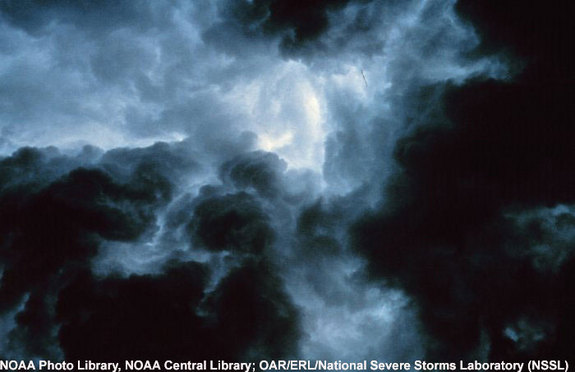Climate Study Finds Mysterious Rise in Erratic Weather


The world isn't just warming, in parts of the planet the weather is becoming more erratic, new research indicates.
By looking at measurements of sunlight striking the planet's surface as well as precipitation records, a study has found that in certain places, daily weather is increasingly flip-flopping between sunny and cloudy, and downpours and dry days. It's not yet clear why this is happening.
This is the first global climate study to examine variation in day-to-day weather. So far, climate science has focused on extremes — record temperatures or intense storms, for example — or on averages, such as estimates that global temperatures have risen 0.7 degrees Celsius (1.3 degrees Fahrenheit) since the Industrial Revolution.
"I think it turns out day-to-day variability is actually important and perhaps more attention should be paid to it," said David Medvigy, the lead researcher and an assistant professor in the department of geosciences at Princeton University.
This is because increases in weather fluctuations have important implications, particularly for plants — which currently pull about 25 percent of the greenhouse gas carbon dioxide emitted by humans out of the air.
Photosynthesis, the process by which plants use carbon dioxide and water to create sugars and oxygen, makes the planet's air breathable and feeds the rest of the food chain. It requires both water and sunlight, and fluctuations in these can reduce photosynthesis. Increasing fluctuations have other consequences, including changing the composition of ecosystems, with different plants dominating while others dwindle, and potentially decreasing the efficiency of at least some forms of solar power.
Medvigy and Princeton postdoctoral researcher Claudie Beaulieu looked at data produced by satellites that measured radiation bouncing off the Earth from 1984 to 2007. This information was then used to infer how much solar radiation was hitting the Earth's surface.
Get the world’s most fascinating discoveries delivered straight to your inbox.
Over this 24-year period, they saw that variability in sunlight reaching the surface changed significantly over 35 percent of the planet, primarily over tropical land in Africa and Asia, and seasonally in parts of the Amazon. Here, they found that, over that period, the flip-flopping between sunny and cloudy days increased on average by just under 1 percent a year, reaching a total change of 20 percent for the whole study period.
Using precipitation data collected by satellites and rain gauges from 1997 to 2007 around the globe, they found that changes in variability of precipitation overlapped with the increased fluctuations in solar radiation. These regions saw a 25 percent increase in the variability in precipitation over the 11-year period. [Study: It Rains Less on Weekends]
It's not clear why daily sunlight and precipitation are becoming more variable in parts of the world, but the researchers suspect it may have something to do with giant convective clouds, created by rising warm air. These clouds, which play a role in rainfall and in blocking sunlight from reaching the ground, were found over areas where the changes in variability occurred, he said.
His research group is now investigating the connection between these clouds and the increases in weather variability.
You can follow LiveScience senior writer Wynne Parry on Twitter @Wynne_Parry. Follow LiveScience for the latest in science news and discoveries on Twitter @livescience and on Facebook.



